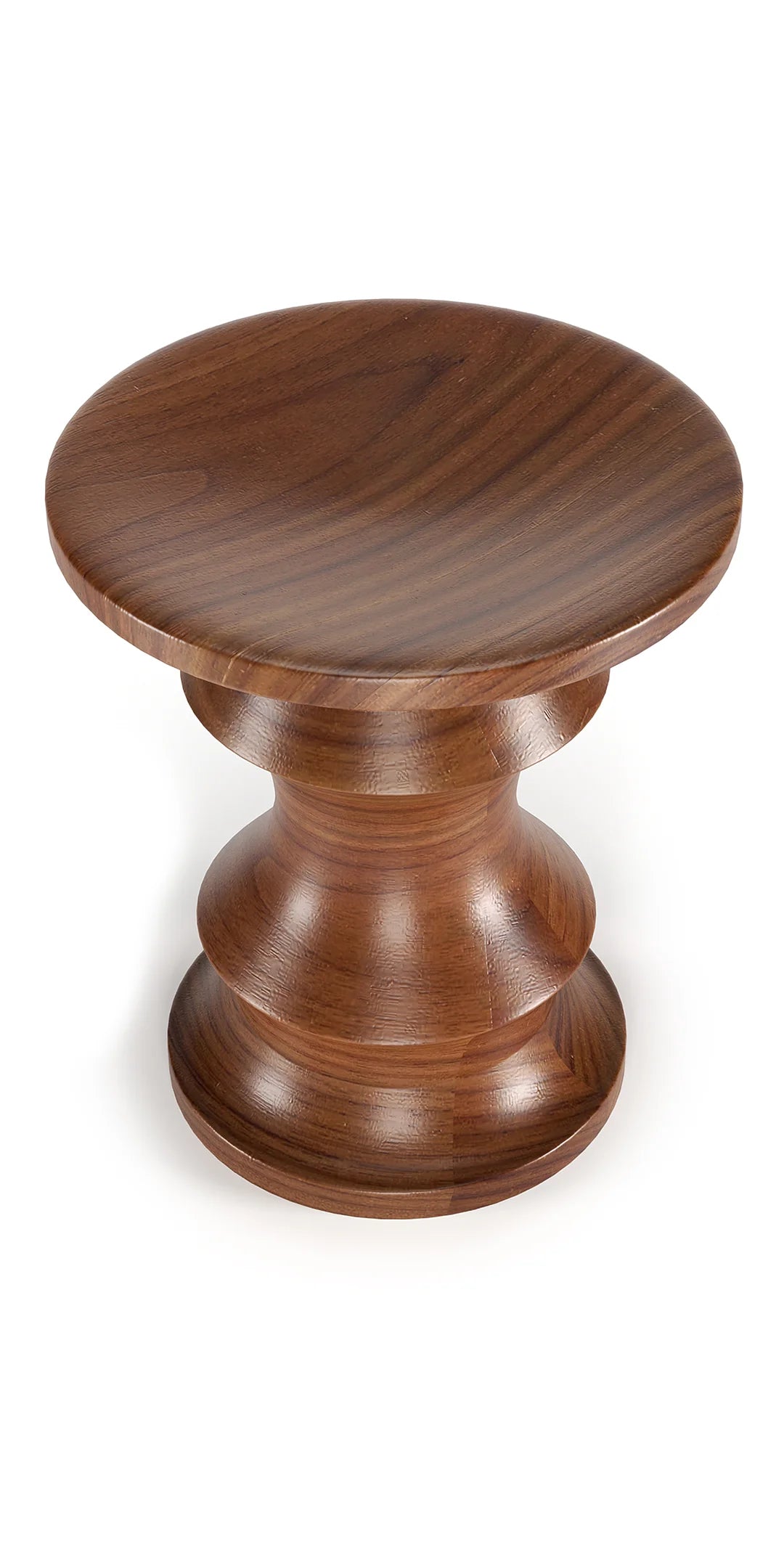
Hommage À Charles & Ray Eames | Walnut Stool A, 1960
Walnut Stool: One

Hommage À Charles & Ray Eames | Walnut Stool A, 1960
Walnut Stool: One
Hommage À Charles & Ray Eames
Walnut Stool: One
Walnut Stool: One
Couldn't load pickup availability
The Walnut Stool was originally designed by Charles and Ray Eames for the Time & Life Building in New York City. Its lathe-turned, solid walnut form is inspired by African stools and serves as a versatile seat, side table, plant stand, sculpture, and more.
Originally crafted in walnut, Archetype Forms also offers it ebony ash, oak, and more.
Shown in shape One in clear Lacquered Walnut. View the full Walnut Stool Set.
The Archetype Forms Walnut Stool: One is a faithful reproduction of the original Charles and Ray Eames Walnut Stool A, also known as the Charles & Ray Eames Turned Stool A.
Share
Distinguishing Features
Distinguishing Features
Designer
Designer
Charles & Ray Eames
Charles and Ray Eames were American designers who revolutionized 20th-century furniture, industrial design, and architecture. They began their collaborative career in 1941 after meeting at the Cranbrook Academy of Art. The Eames are known for their innovation with new materials and technologies in furniture design. Their iconic works include the Moulded Plywood series (1946), the classic Lounge Chair (1956), and the Aluminum Group and Soft Pad series office chairs (1958). The Eames' designs emphasize ergonomics, versatility, and innovation, earning them a permanent place in major museums and archive collections worldwide.
Dimensions
Dimensions
Width: 35 cm
Height: 38 cm
Depth: 35 cm
Construction
Construction
Material: Lathe-turned solid walnut, ebony ash, oak, or other custom selection from Archetype Forms
Finish: Clear lacquer or custom finish options from Archetype Forms
Components: Crafted from three joined walnut segments
Product Details
Product Details
Archetype Forms Walnut Stool: One
The Walnut Stool was originally designed in 1960 by Charles and Ray Eames, commissioned for the Time & Life Building at Rockefeller Center. It features a sculptural, lathe-turned profile with a concave top, tapered waist, and rounded base. The design reflects the Eameses' philosophy of creating functional, minimalist furniture that combines beauty with practicality. Available in 3 turned stool styles.
Influence and Craftsmanship
The Walnut Stool series was inspired by an African stool in the Eameses' personal collection, demonstrating their appreciation for global design influences. Each stool in the series serves as a versatile piece, functioning as a seat, side table, plant stand, sculpture, or display stand. The lathe-turned solid wood construction creates durable, visually striking furniture while showcasing the natural beauty of the material.
The Walnut Stool One design is part of the Eameses' legacy of innovation and their commitment to sustainable furniture. Initially crafted from rosewood, the material was later replaced with walnut to address sustainability concerns. The updated manufacturing process uses three joined segments, reducing waste while preserving the integrity of the original design. Archetype Forms has evolved it further to include options like ebony ash, oak, and more.
Key Features:
Historical Significance: Reproduction of the original Eameses’ 1960 Walnut Stool A, created for the Time & Life Building in New York City.
Innovative Construction: Lathe-turned solid walnut in three segments, enhancing strength and sustainability.
Versatility:
- Functions as a seat, side table, plant stand, standalone sculpture, or display stand.
- Concaved top & bottom. You choose which side is up or down.
Timeless Design: Sculptural mid-century modern form inspired by African furniture.
Customization Options: Available in clear lacquered walnut, ebony ash, oak, or other custom wood and finishes to match your decor.
Shop the Walnut Stool: One, originally designed by Charles & Ray Eames, online in Canada and the USA. Match it with the Walnut Stool: Two and Walnut Stool: Three for a complete set.
Reproduction
Reproduction
The Archetype Forms Walnut Stool: One is a faithful reproduction of the original Charles and Ray Eames Walnut Stool A, also known as the Charles & Ray Eames Turned Stool A.. This item is not manufactured by or affiliated with the original designer(s) and associated parties.

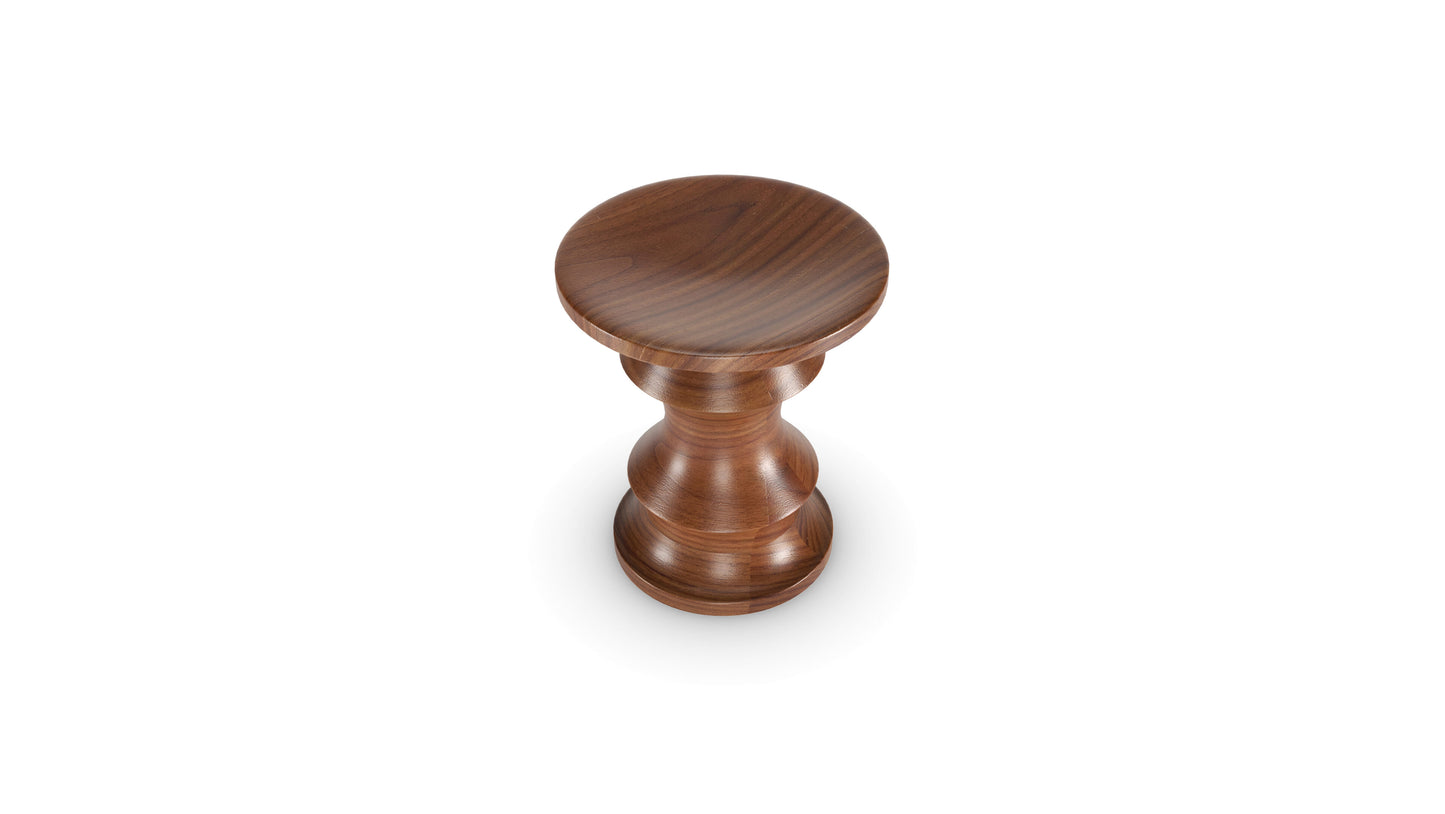
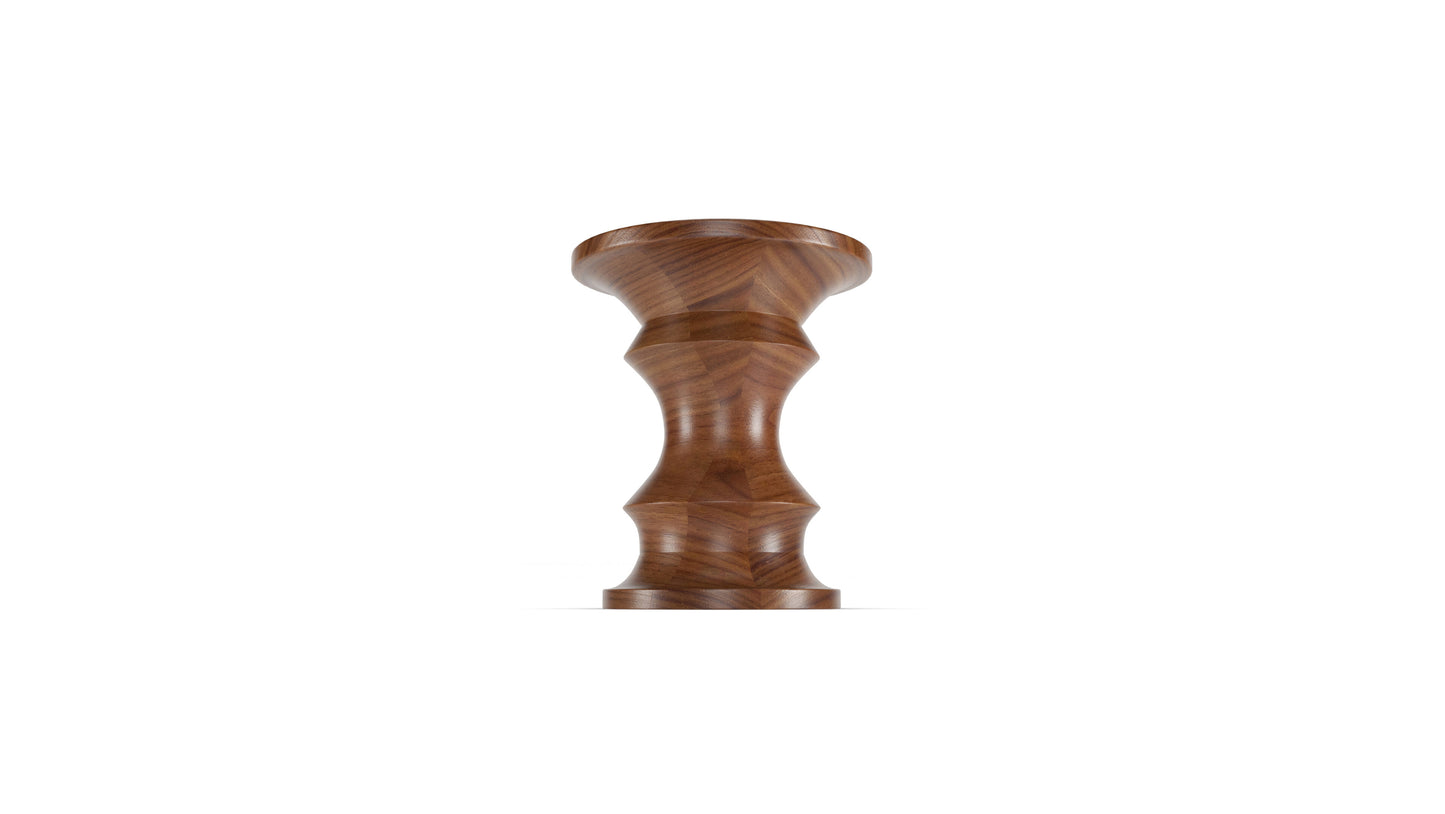
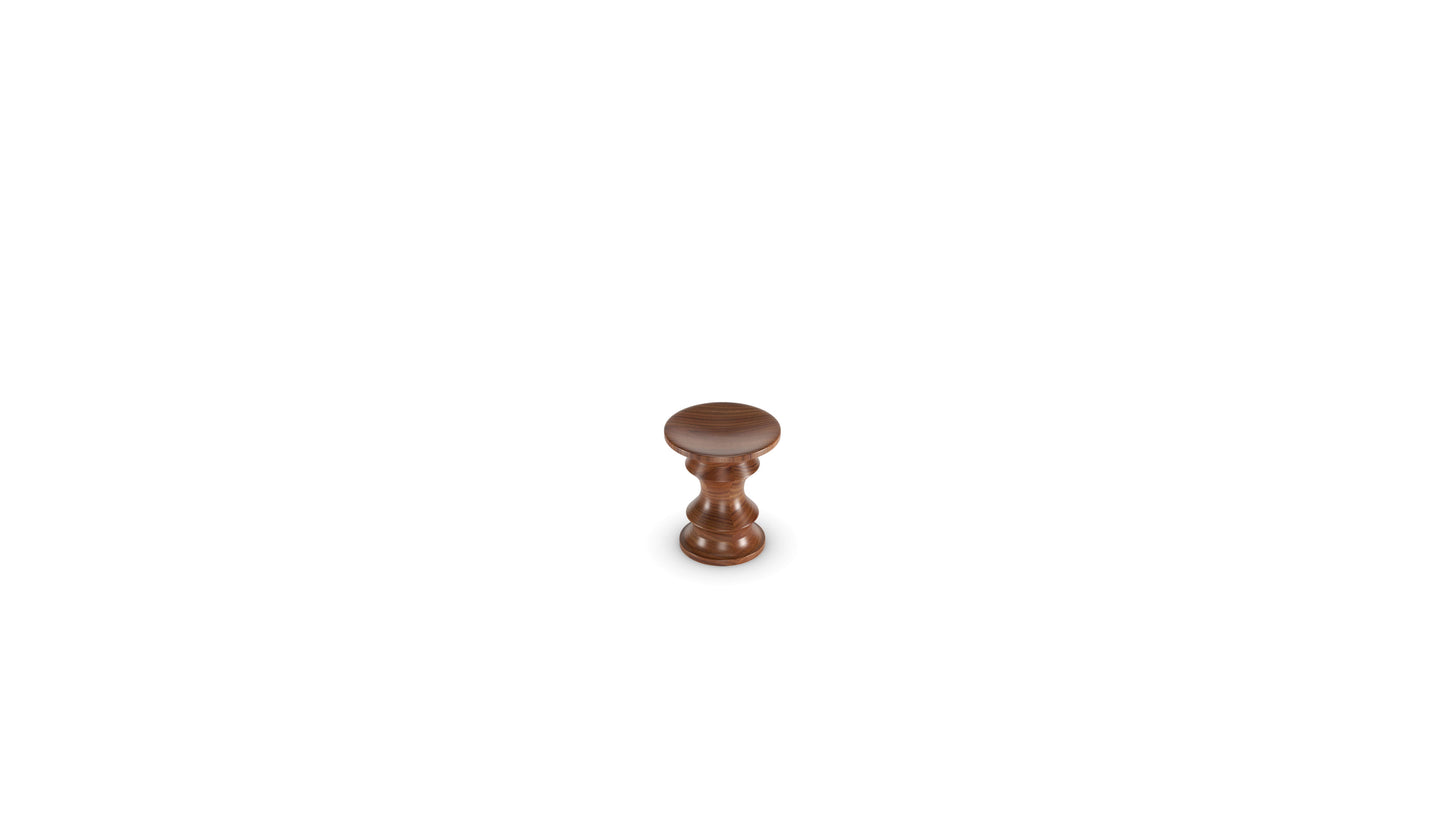
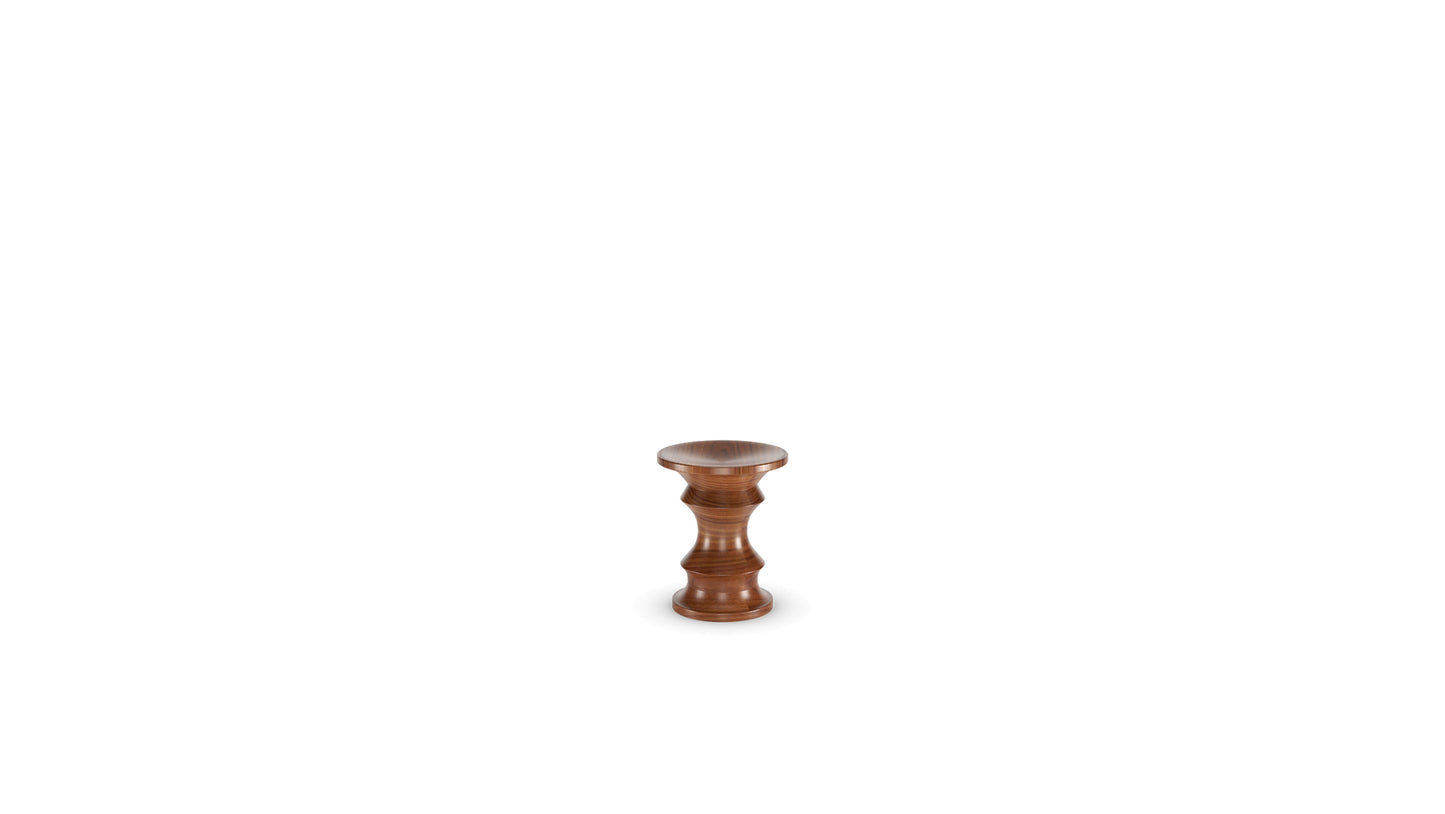
Product Information
Distinguishing Features
Designer
Charles & Ray Eames
Charles and Ray Eames were American designers who revolutionized 20th-century furniture, industrial design, and architecture. They began their collaborative career in 1941 after meeting at the Cranbrook Academy of Art. The Eames are known for their innovation with new materials and technologies in furniture design. Their iconic works include the Moulded Plywood series (1946), the classic Lounge Chair (1956), and the Aluminum Group and Soft Pad series office chairs (1958). The Eames' designs emphasize ergonomics, versatility, and innovation, earning them a permanent place in major museums and archive collections worldwide.
Dimensions
Width: 35 cm
Height: 38 cm
Depth: 35 cm
Construction
Material: Lathe-turned solid walnut, ebony ash, oak, or other custom selection from Archetype Forms
Finish: Clear lacquer or custom finish options from Archetype Forms
Components: Crafted from three joined walnut segments
Product Details
Archetype Forms Walnut Stool: One
The Walnut Stool was originally designed in 1960 by Charles and Ray Eames, commissioned for the Time & Life Building at Rockefeller Center. It features a sculptural, lathe-turned profile with a concave top, tapered waist, and rounded base. The design reflects the Eameses' philosophy of creating functional, minimalist furniture that combines beauty with practicality. Available in 3 turned stool styles.
Influence and Craftsmanship
The Walnut Stool series was inspired by an African stool in the Eameses' personal collection, demonstrating their appreciation for global design influences. Each stool in the series serves as a versatile piece, functioning as a seat, side table, plant stand, sculpture, or display stand. The lathe-turned solid wood construction creates durable, visually striking furniture while showcasing the natural beauty of the material.
The Walnut Stool One design is part of the Eameses' legacy of innovation and their commitment to sustainable furniture. Initially crafted from rosewood, the material was later replaced with walnut to address sustainability concerns. The updated manufacturing process uses three joined segments, reducing waste while preserving the integrity of the original design. Archetype Forms has evolved it further to include options like ebony ash, oak, and more.
Key Features:
Historical Significance: Reproduction of the original Eameses’ 1960 Walnut Stool A, created for the Time & Life Building in New York City.
Innovative Construction: Lathe-turned solid walnut in three segments, enhancing strength and sustainability.
Versatility:
- Functions as a seat, side table, plant stand, standalone sculpture, or display stand.
- Concaved top & bottom. You choose which side is up or down.
Timeless Design: Sculptural mid-century modern form inspired by African furniture.
Customization Options: Available in clear lacquered walnut, ebony ash, oak, or other custom wood and finishes to match your decor.
Shop the Walnut Stool: One, originally designed by Charles & Ray Eames, online in Canada and the USA. Match it with the Walnut Stool: Two and Walnut Stool: Three for a complete set.
Reproduction
The Archetype Forms Walnut Stool: One is a faithful reproduction of the original Charles and Ray Eames Walnut Stool A, also known as the Charles & Ray Eames Turned Stool A.. This item is not manufactured by or affiliated with the original designer(s) and associated parties.

Hommage À Charles & Ray Eames
Charles and Ray Eames were American designers who revolutionized 20th-century furniture, industrial design, and architecture. They began their collaborative career in 1941 after meeting at the Cranbrook Academy of Art. The Eames are known for their innovation with new materials and technologies in furniture design. Their iconic works include the Moulded Plywood series (1946), the classic Lounge Chair (1956), and the Aluminum Group and Soft Pad series office chairs (1958). The Eames' designs emphasize ergonomics, versatility, and innovation, earning them a permanent place in major museums and archive collections worldwide.




